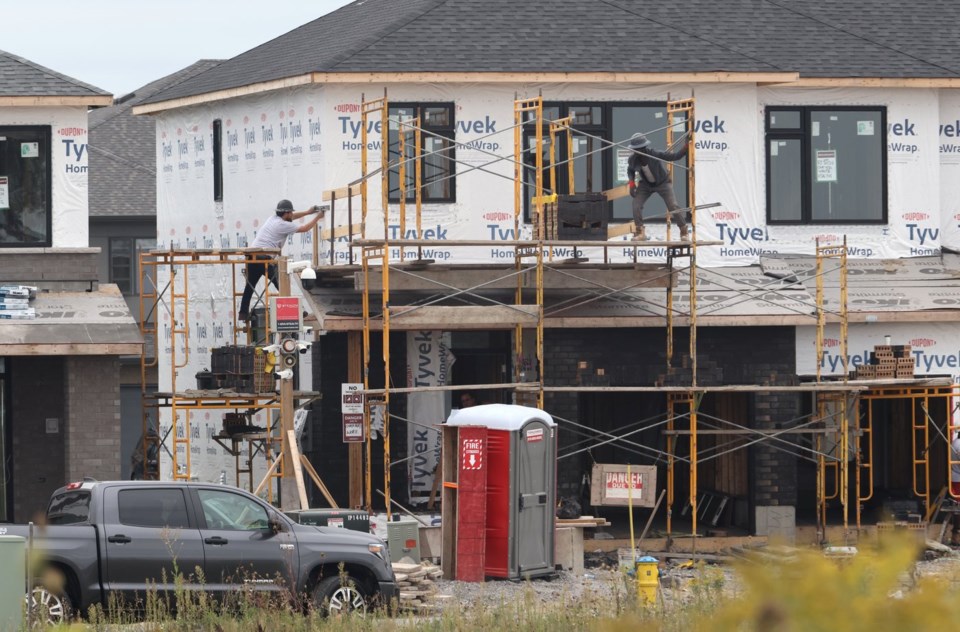A new report by Desjardins warns Ottawa's efforts to kickstart new housing supply likely won't be enough to meet "optimistic" targets due to regulatory hurdles and constraints on labour, materials and financing.
The report, released Tuesday by economists Marc Desormeaux, Kari Norman and Randall Bartlett, highlighted the ongoing labour shortage in the construction industry as the "primary constraint" holding back new housing starts.
The federal government laid out its sa���ʴ�ý Housing Plan earlier this year vowing to unlock 3.87 million new homes by 2031 through measures such as new tax incentives and efforts to build more housing on public lands.
The report noted 1.87 million of those homes were expected to be built anyway by 2031.
It said the federal housing plan could translate into nearly 70,000 additional housing starts in 2028, on top of the roughly 235,000 projected to be built in the absence of those measures.
Even with the increase, those figures still "come well short of the pace needed" to achieve the sa���ʴ�ý Mortgage and Housing Corp.'s estimated targets in order to restore affordability by 2030. CMHC has said the country would need to boost home construction by 3.5 million units, bringing the total number of new homes built within that timeframe to 5.8 million.
"At the end of the day, building 5.8 million new homes in the next eight years would be an ambitious plan even if all the stars aligned," the authors wrote, adding it took three decades to build the last 5.8 million homes in sa���ʴ�ý.
"With significant labour, materials, financing and regulatory constraints, the stars aren’t currently aligned in sa���ʴ�ý."
The Canadian Home Builders’ Association estimates sa���ʴ�ý needs more than one million additional residential construction workers to meet the CMHC’s target.
"Amid slower population growth and an immigration system that is not focused on attracting skilled tradespeople, an even greater share of domestic resources will need to be dedicated to residential investment to meet federal housing targets," it said.
Elevated interest rates and inflation have also increased the cost to finance construction projects, as have regulations such as those requiring builders to use more costly climate-resistant building materials due to extreme weather.
"That said, simply because sa���ʴ�ý is highly unlikely to meet that lofty goal doesn’t mean it should throw in the towel," the authors wrote.
"Even if it can’t meet 'affordability' as defined by the CMHC by decade end, the housing supply crisis can still be lessened through building as many homes as possible."
This report by The Canadian Press was first published Sept. 10, 2024.
Sammy Hudes, The Canadian Press


